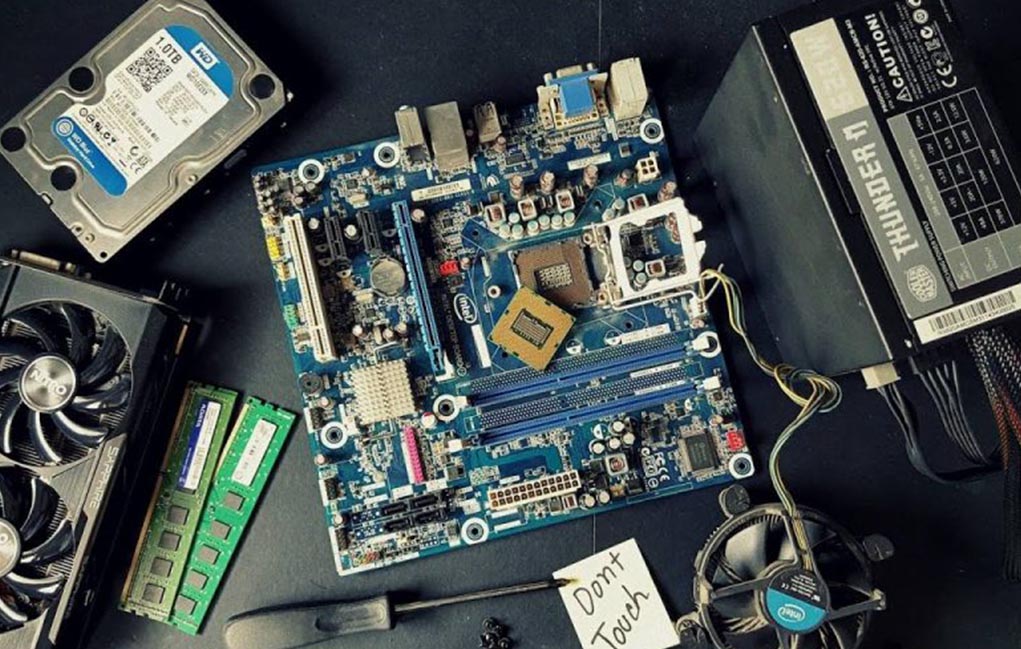Study via Distance Learning

CompTIA A+ ( IT Technician)
An IT Technician provides a wide range of services to support, fix, and maintain the hardware and software of an organization’s computer systems. IT Technicians install, troubleshoot, test, or help roll out security features, hardware, and software, or maintain networks and computer systems. Often considered an entry-level position, IT Technicians can go on to more specialized roles like systems engineer, network administrator, or cloud administrator.
Course Categories: Industry Endorsed Course
Delivery Model: Online
Field: Information Technology
Mode of delivery: Distance learning
Subjects:
CompTIA A+ 220-1001 (Core 1)
CompTIA A+ 220-1002 (Core 2)
Course Outline
CompTIA A+ 220-1101 (Core 1)
CompTIA A+ 220-1101: Installing and Configuring PC Components
CompTIA A+ 220-1101: Installing, Configuring, and Troubleshooting Display and Multimedia Devices
CompTIA A+ 220-1101: Installing, Configuring, and Troubleshooting Storage Devices
CompTIA A+ 220-1101: Installing, Configuring, and Troubleshooting Internal System Components
CompTIA A+ 220-1101: Network Infrastructure Concepts
CompTIA A+ 220-1101: Configuring and Troubleshooting Networks
CompTIA A+ 220-1101: Implementing Client Virtualization and Cloud Computing
CompTIA A+ 220-1101: Supporting and Troubleshooting Laptops
CompTIA A+ 220-1101: Supporting and Troubleshooting Mobile Devices
CompTIA A+ 220-1101: Installing, Configuring, and Troubleshooting Print Devices
CompTIA A+ 220-1102 (Core 2)
CompTIA A+ 220-1102: Supporting Operating Systems
CompTIA A+ 220-1102: Installing, Configuring, and Maintaining Operating Systems
CompTIA A+ 220-1102: Maintaining and Troubleshooting Microsoft Windows
CompTIA A+ 220-1102: Configuring and Troubleshooting Networks
CompTIA A+ 220-1102: Managing Users, Workstations, and Shared Resources
CompTIA A+ 220-1102: Security Concepts
CompTIA A+ 220-1102: Securing Workstations and Data
CompTIA A+ 220-1102: Troubleshooting Workstation Security Issues
CompTIA A+ 220-1102: Supporting and Troubleshooting Mobile Devices
CompTIA A+ 220-1102: Implementing Operational Procedures
Course starting dates: You can register and start studying this course at any time as registration is open all year round.
Admission requirements: Grade 10
The ability to read and write in English
Learners must be at least 16 years of age
Course type: Industry Endorsed
Industry Partner: CompTIA
Certification: Certificate confirming course completion
Certification issued by: COMPTIA
CompTIA A+ 220-1001 (Core 1) and 220-1002 (Core 2) CompTIA A+ 220-1001 covers mobile devices, networking technology, hardware, virtualization and cloud computing and network troubleshooting, installing and configuring operating systems, expanded security, software troubleshooting and operational procedures.
| . | ||||||||||||||||||||||||
Course fee: R
Course Deposit fee: R
Monthly instalment option: R
Payment duration: 10 Months
Study duration: 12 Months
COMPTIA NETWORK+ PROVES YOU HAVE THE SKILLS REQUIRED TO MANAGE TODAY’S NETWORKS
What Skills Will You Learn?
Hardware
Identifying, using and connecting hardware components and devices, including the broad knowledge about different devices that is now necessary to support the remote workforce
Networking
Explain types of networks and connections including TCP/IP, WIFI and SOHO
Mobile Devices
Lorem ipsum dolor sit amet, consectetur adipiscing elit. Ut elit tellus, luctus nec ullamcorper mattis, pulvinar dapibus leo.
Operating Systems
Explain routing technologies and networking devices; deploy ethernet solutions and configure wireless technologies
Troubleshooting
Troubleshoot real-world device and network issues quickly and efficiently
Virtualization and Cloud Computing
Compare and contrast cloud computing concepts and set up client-side virtualization
Software Troubleshooting
Troubleshoot PC and mobile device issues including common OS, malware and security issues
Security
Identify and protect against security vulnerabilities for devices and their network connections
Operational Procedures
Follow best practices for safety, environmental impacts, and communication and professionalism



